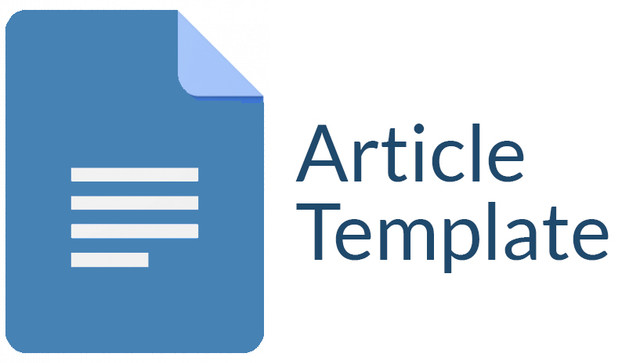Implementasi Model Pembelajaran Daring Dalam Masa Pandemi Covid19 Di Kelas III UPT SDN 304 Ujung Pangka Gresik
Keywords:
Pembelajaran Daring, Pandemi Covid-19, Sekolah Dasar, Implementasi Pembelajaran DaringAbstract
Penelitian ini bertujuan untuk mendeskripsikan implementasi model pembelajaran daring selama masa pandemi Covid-19 di kelas III UPT SDN 304 Ujung Pangka Gresik. Pandemi Covid-19 memaksa seluruh satuan pendidikan untuk beradaptasi dengan metode pembelajaran jarak jauh (PJJ), termasuk sekolah dasar yang menghadapi tantangan tersendiri dalam hal kesiapan teknologi, partisipasi siswa, dan efektivitas penyampaian materi. Penelitian ini menggunakan pendekatan kualitatif deskriptif dengan teknik pengumpulan data melalui observasi, wawancara, dan dokumentasi. Subjek dalam penelitian ini adalah guru kelas III, siswa, dan orang tua.
Hasil penelitian menunjukkan bahwa implementasi pembelajaran daring dilaksanakan melalui berbagai platform digital seperti WhatsApp, Google Classroom, dan Zoom. Namun, proses pelaksanaan mengalami beberapa kendala, antara lain keterbatasan perangkat teknologi, rendahnya literasi digital orang tua dan siswa, serta keterbatasan interaksi antara guru dan siswa. Meski demikian, guru berupaya mengatasi hambatan tersebut dengan strategi adaptif seperti pemberian materi melalui media sederhana dan pendampingan secara intensif oleh orang tua.
Temuan ini sejalan dengan penelitian sebelumnya seperti yang dikemukakan oleh Purwanto et al. (2020), yang menyoroti tantangan pembelajaran daring pada jenjang sekolah dasar selama pandemi, serta penelitian oleh Adedoyin & Soykan (2020) yang menegaskan pentingnya kesiapan infrastruktur dan kompetensi digital dalam pelaksanaan e-learning. Dengan demikian, implementasi model pembelajaran daring memerlukan perencanaan yang matang, pelatihan pendidik, serta dukungan dari berbagai pihak, terutama keluarga siswa, agar proses pembelajaran tetap efektif meskipun dilakukan dari jarak jauh.
Downloads
References
Anderson, T. (2011). The theory and practice of online learning (2nd ed.). AU Press.
Arends, R. I. (2012). Learning to teach (9th ed.). McGraw-Hill.
Arifin, S. (2020). Efektivitas pembelajaran daring di sekolah dasar pada masa pandemi COVID-19. Jurnal Pendidikan Dasar, 12(2), 45–54.
Aristovnik, A., Keržič, D., Ravšelj, D., Tomaževič, N., & Umek, L. (2020). Impacts of the COVID-19 pandemic on life of higher education students: A global perspective. Sustainability, 12(20), 8438. https://doi.org/10.3390/su12208438
Bandura, A. (1977). Social learning theory. Prentice-Hall.
Bandura, A. (1986). Social foundations of thought and action: A social cognitive theory. Prentice-Hall.
Bishop, J. L., & Verleger, M. A. (2013). The flipped classroom: A survey of the research. ASEE National Conference Proceedings, Atlanta, GA, 30(9), 1–18.
Boelens, R., De Wever, B., & Voet, M. (2017). Four key challenges to the design of blended learning: A systematic literature review. Educational Research Review, 22, 1–18. https://doi.org/10.1016/j.edurev.2017.06.001
Bogdan, R. C., & Biklen, S. K. (2011). Qualitative research for education: An introduction to theories and methods (5th ed.). Pearson.
Creswell, J. W. (2014). Research design: Qualitative, quantitative, and mixed methods approaches (4th ed.). SAGE Publications.
Dhawan, S. (2020). Online learning: A panacea in the time of COVID-19 crisis. Journal of Educational Technology Systems, 49(1), 5–22. https://doi.org/10.1177/0047239520934018
Dong, C., Cao, S., & Li, H. (2020). Young children’s online learning during COVID-19 pandemic: Chinese parents’ beliefs and attitudes. Children and Youth Services Review, 118, 105440. https://doi.org/10.1016/j.childyouth.2020.105440
Fadilah, S. (2020). Strategi komunikasi guru dalam pembelajaran daring di sekolah dasar. Jurnal Pendidikan Dasar, 14(2), 76–84.
Downloads
Additional Files
Published
Issue
Section
License

This work is licensed under a Creative Commons Attribution-ShareAlike 4.0 International License.
Authors who publish with this journal agree to the following terms:
1. Copyright on any article is retained by the author(s).
2. The author grants the journal, right of first publication with the work simultaneously licensed under a Creative Commons Attribution License that allows others to share the work with an acknowledgment of the work’s authorship and initial publication in this journal.
3. Authors are able to enter into separate, additional contractual arrangements for the non-exclusive distribution of the journal’s published version of the work (e.g., post it to an institutional repository or publish it in a book), with an acknowledgment of its initial publication in this journal.
4. Authors are permitted and encouraged to post their work online (e.g., in institutional repositories or on their website) prior to and during the submission process, as it can lead to productive exchanges, as well as earlier and greater citation of published work.
5. The article and any associated published material is distributed under the Creative Commons Attribution-ShareAlike 4.0 International License









